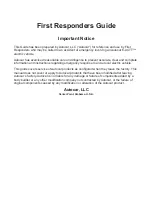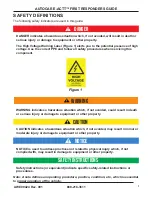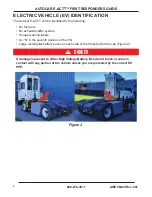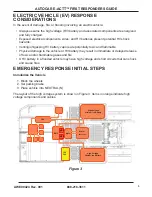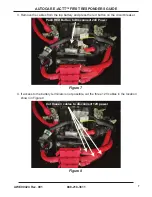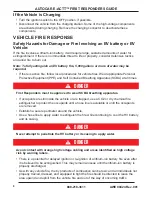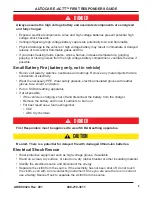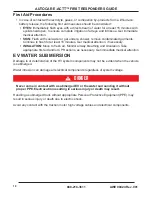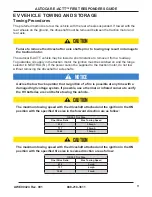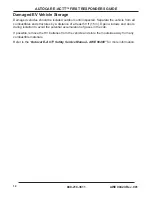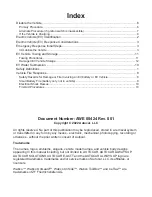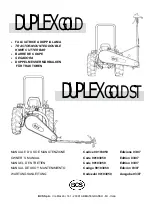
AUTOCAR E-ACTT™FIRST RESPONDERS GUIDE
888-218-3611
AWE 00424 Rev. 001
8
If the Vehicle is Charging
•
Turn the ignition switch to the OFF position, if possible.
• Disconnect the vehicle from the charging station. Some of the high-voltage components
are activated during charging. Remove the charging connector to deactivate these
components.
VEHICLE FIRE RESPONSE
Safety Hazards for Damage or Fire Involving an EV battery or EV
Vehicle:
If the fire involves a lithium-ion battery, it will require large, sustained amounts of water for
extinguishment. If there is no immediate threat to life or property, consider defensive tactics
and allow fire to burn out.
Note: To fully extinguish an EV battery fire, 5,000 gallons or more of water may be
required.
•
If there is active fire, follow local procedures for vehicle fires. Wear appropriate Personal
Protective Equipment (PPE) and Self Contained Breathing Apparatus (SCBA) at all times.
DANGER
First Responders must be approved to wear SCBA breathing apparatus.
•
If occupants are still inside the vehicle or are trapped, use a CO2 or dry chemical fire
extinguisher to protect the occupants until a hose line is available or until the occupants
are removed.
• Establish a secure perimeter around the vehicle.
•
Use a hose line to apply water to extinguish the fire while continuing to cool the HV battery
and its casing.
DANGER
Never attempt to penetrate the HV battery or its casing to apply water.
DANGER
Avoid contact with orange high voltage cabling and areas identified as high voltage
risk by warning labels.
•
There is a potential for delayed ignition or re-ignition of a lithium-ion battery fire even after
it is believed to be extinguished. This may remain an issue until the lithium-ion battery is
properly discharged.
•
As with any vehicle fire, the by products of combustion can be toxic and all individuals not
properly trained, dressed, and equipped to fight the fire should be directed to leave the
area upwind and uphill from the vehicle fire and out of the way of oncoming traffic.



